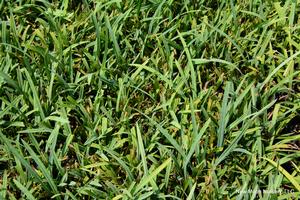Printed at http://www.newmoonnursery.com/index.cfm/
Carex laxiculmis
Creeping sedge
Native to North America
FIRST IMPRESSIONS: Carex laxiculmis is a petite perennial sedge that forms mounds of foot tall lush shaggy foliage. The leaves are semi-evergreen with a striking blue-green color. In late spring greenish scaly flower spikes are displayed above the foliage. This sedge occurs in moist woods or can be used as an accent or groundcover in a shade garden.
HABITAT & HARDINESS: Carex laxiculmis is native to Ontario and Quebec. In the United States, range extends from Maine to Florida and west to Minnesota and Arkansas. The greatest distribution is in the Northeastern U. S. south to North Carolina and Tennessee.
Plants are indigenous to rich woods, moist stream banks, and swamp margins.
The literature reports that this sedge is hardy from USDA Zones 4-7 but scattered populations occur at least as far south as Zone 9.
PLANT DESCRIPTION: Carex laxiculmis grows in compact clumps of arching foliage. Plants gradually form small colonies from short underground rhizomes.
Leaves are glaucous and bluish or occasionally medium green. Leaves are up to 12-18" long and about 1/2” wide. Blades are wider than many other sedges and are evergreen through most of the range.
In spring culms bear terminal staminate (male) spikes with pistillate (female) spikes below. The flowering culms are narrow and often rather floppy. The lower pistillate spikes are attached with weak nodding stalks.
Each pistillate spike contains only a few (less than 9) beaked triangular perigynia
This sedge is about 1’ tall with an equal or wider spread.
CULTURAL & MAINTENANCE NEEDS: Carex laxiculmis prospers in moist woodlands especially those with rich calcareous soil. The preferred exposure is bright shade but plants will tolerate part sun if the soil is kept consistently moist.
Despite its common name, creeping sedge is slow to colonize. Plants slowly naturalize by producing occasional seedlings.
Established plants are pest resistant and unpalatable to deer and other herbivores.
In garden situations, plants should be cut to the ground during late winter before new growth is initiated. Plants may need supplemental irrigation if summers are particularly hot and dry.
LANDSCAPE USES: Carex laxiculmis is a valuable Groundcover or Edging Plant for a Shade Garden. This sedge is lovely when Grouped or Massed in moist areas beside a stream or pond. The unique leaf color allows this sedge to serve as an eye catching Accent. Plants provide Erosion Control and Winter Interest and are appropriate for Deer Resistant Plantings, Low Maintenance Plantings, Rain Gardens, Rock Gardens and Wildlife Gardens.
This sedge is an excellent native substitute for the popular Asian groundcovers Liriope muscari and Ophiopogon japonicus.
COMPANION & UNDERSTUDY PLANTS: Suitable garden companions for Carex laxiculmis could include: Heuchera americana ‘Dale’s Strain’, Iris cristata, Phlox divaricata, Viola walteri ‘Silver Gem’, Spigelia marilandica, and Polystichum acrostichoides.
Carex flaccosperma has similar appearance and cultural needs and is a bit more tolerant of drought.
TRIVIA: Carex laxiculmis is similar in appearance to C. flaccosperma. Some differences between the two are that C. flaccosperma will tolerate some drought and has up to 60 beakless perigynia per spike. C. laxiculmis, on the other hand, requires moisture and each pistillate spike has 4-9 perigynia with bent tapering beaks.
Height:
1 ftUSDA Hardiness Zone:
4-7Bloom Color:
White, YellowCarex laxiculmis Characteristics
Attributes
- Ground Cover
Exposure
- Full Shade to Partial Shade
Deer Resistant
- Deer Resistant
Flowering Months
- July
- June
- May
- April
Foliage Color
- Blue-Green
Grass Season
- Cool Season Grass
Groundcover Foot-Traffic Tolerances
- Light
Lawn Replacement or Groundcover
- Groundcover
Soil Moisture Preference
- Moist
Interesting Notes:
For more information on this plant, visit the USDA PLANTS Database: http://plants.usda.gov/java/profile?symbol=CALA18

